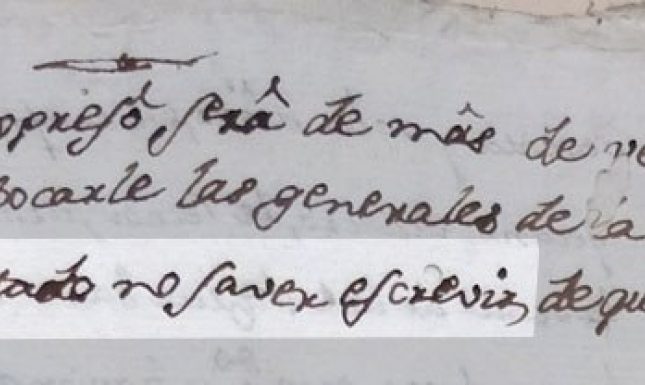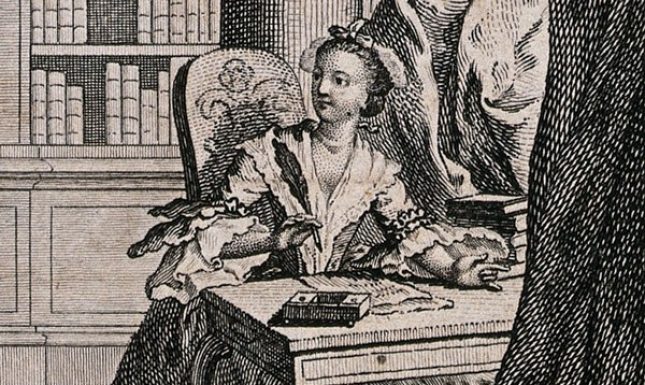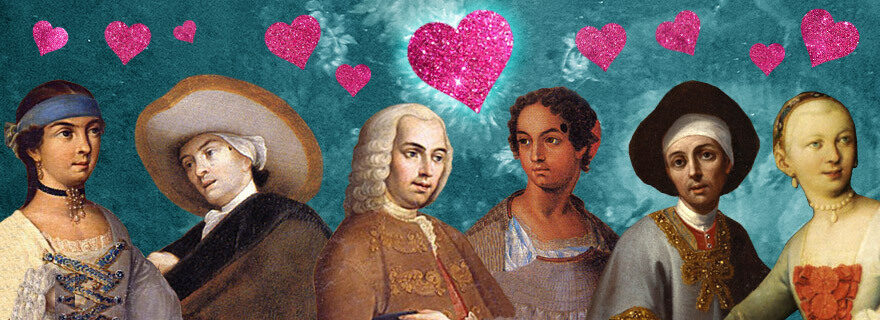#ArchiveEmotion: my eighteenth century telenovela
In a previous post, I mentioned the slow-pace of working with archives. Reading through metres of paper is however anything but boring. Besides finding material for our research we often find extremely interesting stories. Think of it as a paper telenovela of people that lived hundreds of years ago.
My research is on reading spaces, or opportunities, in eighteenth century New Spain, aka colonial Mexico. Since the people from that century are very much dead by now, I am using archival records to find out more information about them. For example how many had basic literacy skills? And was this related to their ethnicity, gender, and their occupation? There is a type of document that is extremely handy for these purposes: diligencias matrimoniales or marriage licenses.
A diligencia matrimonial was a permit that a bride and a groom had to get in order to be able to marry. The conditions were: there should not be consanguinity, they should be good Christians (Catholics), not have promised themselves for marriage to somebody else, be single, and not have promised to dedicate their lives to God. Besides their own testimony, the bride and groom would bring witnesses that would corroborate their testimonies.


Many of these records are pretty standard: groom declares and signs (or not), bride declares and signs (or not), followed by testimonies of witnesses. Others have juicy details. For example, my assumption of colonial Mexico was that being a Catholic region, pre-marital sex would be a no-no. This assumption comes from growing up in Mexico and having attended weddings where the very visibly pregnant bride would marry in white and the family would swear she was still a virgin only to give birth one month later.
My surprise was big when I started noticing that some brides and grooms had enjoyed “carnal acts” and even had produced offspring before getting married. Although pre-marital sex was not encouraged, having sex with a person with whom you intended to marry was not that bad. So sexual life in the colony was more varied and lively than I had certainly imagined.


Other records tell of men in prison that want to marry women who are also in prison. In some of these cases there had been offspring produced although it is not clear when the sex had happened. As my research focuses on literacy I haven’t had time to check if there were marital visits in prisons. What these records show is the relevance of being married to be a good Catholic, as many documents state people wanted to marry “to please the mother Church”.
In some occasions, records deliver glimpses of torrid romances as the following two cases show. The first one is from 1761 and concerns Manuel Salvador Vasques and Casiana Francisca de Guadarrama, both Criollos (Spaniards born in the colony). This record is a joy, not only could the bride sign but she knew how to write: there are three letters from her hand, including a small poem.
The record is relatively long as it contains objections of two other people to whom Manuel and Casiana had promised themselves in marriage… those cheeky bastards. So what happened is that my friend Manuel had promised marriage to María Dorothea, a mestiza who had a small child and begged in the streets. Although the file does not clarify it, my guess is that he promised marriage in order to get sex. Not cool Manuel, not cool at all. For her part, Casiana had two carnal acts with Francisco de Herrera, also a Criollo, and she wrote him the three letters with the poem.


From the racial and ethnic point of view from the colony, a mestiza was lower than a Criolla, so María Dorothea had not many chances of succeeding in her objection. Besides, she was a beggar and her last name is not even mentioned, so not a good match all-in-all. In the case of Casiana, Francisco eventually desisted and she could marry Manuel.
What is interesting here is that sex seemed to have happened a lot outside of the sanctioned environments. A woman managed to have pre-marital sex with a guy and married another one who apparently had no problems with that. Casiana, you go girl! However, I think we can all agree that Manuel was a fine specimen of excrement for lying to María Dorothea in order to have sex.
The other case has even more romance and drama. In 1757 Antonio Anastacio Patiño Mondragón wanted to marry Ana Antonia Ameztiqua, whom he had ‘deflowered’ five years earlier. The record is not a common diligencia as it starts with a complaint from Antonio Anstacio that his relatives are blocking the marriage. His brother was very much against the marriage because he claimed she was a black uneducated commoner, daughter of a male slave and a mulatta (offspring of white and black). Even worse, she sustained herself through “sexual exercises”.
This case had very few chances of succeeding. First of all, any amount of black blood was not desirable for one’s lineage and having a slave ancestor was also not a plus. This was not only bad for Antonio Anastacio but for his whole family. Second, the brother was a priest thus his word weighed much more than that of a black woman. Although Ana Antonia and her mother claimed the accusations of prostitution were untrue and raised the issue with the authorities, their pleas were not heard. They also had not enough money to travel to Mexico City and present their case to the court.


Antonio Anastacio was devastated and ran away with Ana Antonia: the law would not stop their love. Unfortunately he was captured and sent to prison. Needless to say, the marriage did not take place. Most likely Ana Antonia had worked in the house of the Mondragón family, Antonio Anastacio fell in love with her, and they had sex. It is impossible to know how Ana Antonia felt about this except that she definitely wanted to be married.
Archives like these are fascinating because they provide much about a community and the relationships between individuals. For example highlighting the different treatment whites and blacks received. Although the subjects of these archives are not my relatives, they nevertheless tell a story of where I come from. Not only because we all were born in the same territory but because they showcase how the patriarchy and privileges affected peoples’ lives, something which still happens nowadays if in a different way.
I would like to thank SHARP (https://www.sharpweb.org/main/) for their Research Development Grant for BIPOC Scholars 2021, which has allowed me to build this database, as well as Mariana Solis López, who is transcribing together with me some of the 300 records.
Further reading
The Black Blood of New Spain (https://userpages.umbc.edu/~kars/history%20200/martinez.htm), María Elena Martínez.
© Andrea Reyes Elizondo and Leiden Arts in Society Blog, 2020. Unauthorised use and/or duplication of this material without express and written permission from this site’s author and/or owner is strictly prohibited. Excerpts and links may be used, provided that full and clear credit is given to Andrea Reyes Elizondo and Leiden Arts in Society Blog with appropriate and specific direction to the original content.



0 Comments